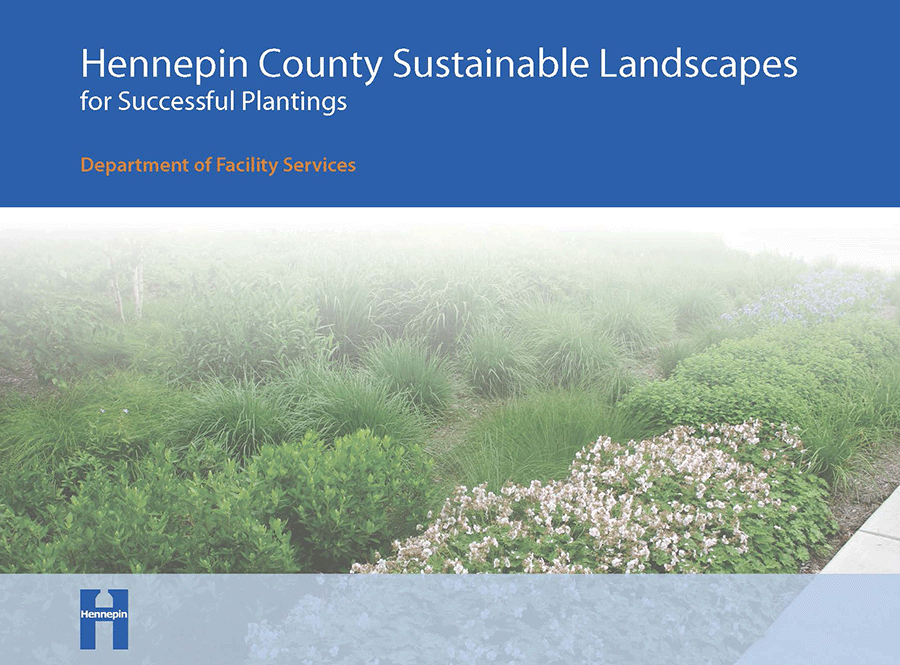Across the U.S., we are experiencing extreme weather events with more frequency. At the same time, we are also witnessing precipitation increases or decreases, as well as rising temperatures. In some areas of the U.S., there is a higher frequency of sudden and intense storms that produce several inches of rain in a short amount of time, leading to flooding and stormwater runoff pollution. Meanwhile, drought can occur in the same place—even in the same year. The one thing predicted for everyone is an increase in the extremes of heat, drought, flooding, wind, and humidity.
How can we, as communities and landowners, become more resilient to the extremes of climate change? One road is through green infrastructure design and implementation.
What is green infrastructure, and how does it build climate resilience?
Green infrastructure is the natural component of our built environment. It’s the green between the gray infrastructure (e.g., buildings, streets, parking lots, etc.). Green infrastructure planning and design involve the intentional bolstering of natural systems within the urban fabric to enhance our living environment. Components of green infrastructure include healthy soil, diverse native plantings, urban forest, aboveground stormwater-management facilities (such as rain gardens), lawns and landscapes, parks, and open space. Green infrastructure can effectively mitigate urban issues such as limited biodiversity, stormwater management, urban forest management, habitat, air pollution, and the urban heat island effect (i.e., the buildup of heat within urban areas due to heat storage in pavement). Most importantly, by thoughtfully designing nature into built environments, we move closer toward climate resilience.
Six ways to incorporate green infrastructure design
Let’s explore the many ways green infrastructure design can be incorporated into land—whether public, commercial, corporate, industrial, or residential.
1. Amend soils.
Urban soils are typically compacted during construction projects. Compacted soils shed water and do not support healthy plant life. By loosening compacted soils and mixing in compost, soils hold more water and allow oxygen to circulate into the ground to support roots and the soil biome. Think of soil as a living environment. Abundant soil bacteria, fungi, and many other organisms supply nutrients and water to plant roots that reciprocate by providing sugars and proteins. This symbiotic relationship creates an ecosystem that allows the soil to become open (as opposed to compacted) to support deep root growth and provide essential nutrients to plants. As roots die over time, they decompose to create the black of black dirt. This is sequestered carbon!
By contouring the land and improving soils to hold precipitation, we filter stormwater, reduce runoff, recharge aquifers, and support healthy plants that can withstand climate extremes, as well as reduce downstream flooding.
2. Build rain gardens.
Capture stormwater running off roofs, streets, and parking lots in shallowly dug basins (rain gardens) that soak water into the ground and grow a diversity of plant species, including trees. This cleans stormwater through natural filtration and reduces runoff, mitigating downstream flooding. There are many types of facilities that capture stormwater to reduce runoff, including rain gardens, tree trenches, and bioswales.
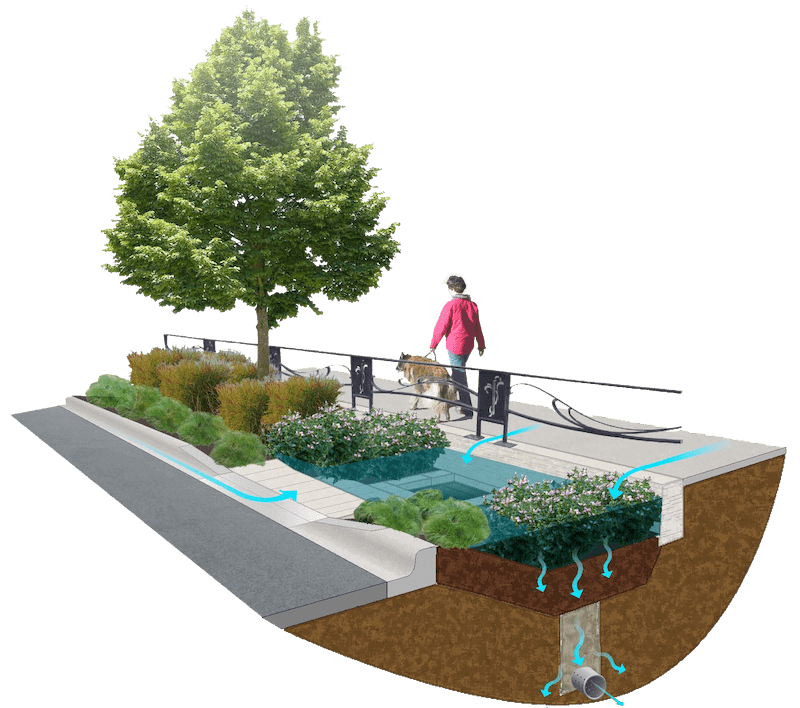 A rain garden captures stormwater to reduce runoff.
A rain garden captures stormwater to reduce runoff.
3. Harvest rainwater.
Most communities require the construction of stormwater management facilities, but this can be taken a step further by harvesting nuisance runoff (to downstream property owners) and storing it in cisterns to be used later to irrigate landscape or flush toilets.
4. Eliminate lawn.
Unused lawns can be transitioned to alternative plantings (native plants, ideally). This supports pollinator species and improves rainwater infiltration by opening the soil via deep penetrating roots that die to create open channels. Native plantings do not require regular mowing, irrigation, pesticides, or fertilizers because they are well adapted to the growing conditions of the region. This reduces maintenance costs and preserves many natural resources. Native plantings also serve as essential habitats, carbon sequestration areas, sponges for stormwater, and are resilient to dry and wet extremes that would greatly stress lawn.
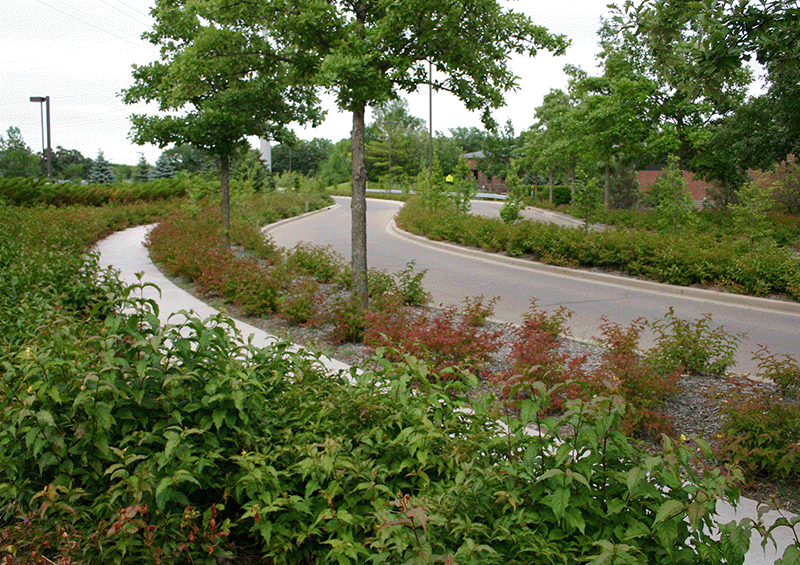 Barr’s green infrastructure design replaced lawn with native grasses and shrubs at the City Hall in Minnetonka, Minnesota.
Barr’s green infrastructure design replaced lawn with native grasses and shrubs at the City Hall in Minnetonka, Minnesota.
5. Plant trees.
Shade pavement and buildings by thoughtfully locating new trees. Planting trees can help reduce the urban heat island effect, air conditioning needs, and greenhouse gas (GHG) release. Trees also provide a more comfortable environment for people and offer habitat for many species, especially insects, that provide pollination and play an important role in the wildlife food web. Windbreaks can also be established if space allows.
6. Reduce pavement.
Can pavement be reduced or eliminated, perhaps in malls or parking lots with far fewer cars than parking spaces, or by narrowing wide residential streets if parking demand is low? In these examples, living street systems, biofiltration and infiltration basins, stormwater tree trenches, and street trees are all great options. At the time of reconstruction, pavement, sidewalks, roofs, and parking lots can be reevaluated to determine if the entirety of pavement is necessary. Think about replacing these areas with plantings to capture stormwater runoff, grow trees, and provide all the benefits described above.
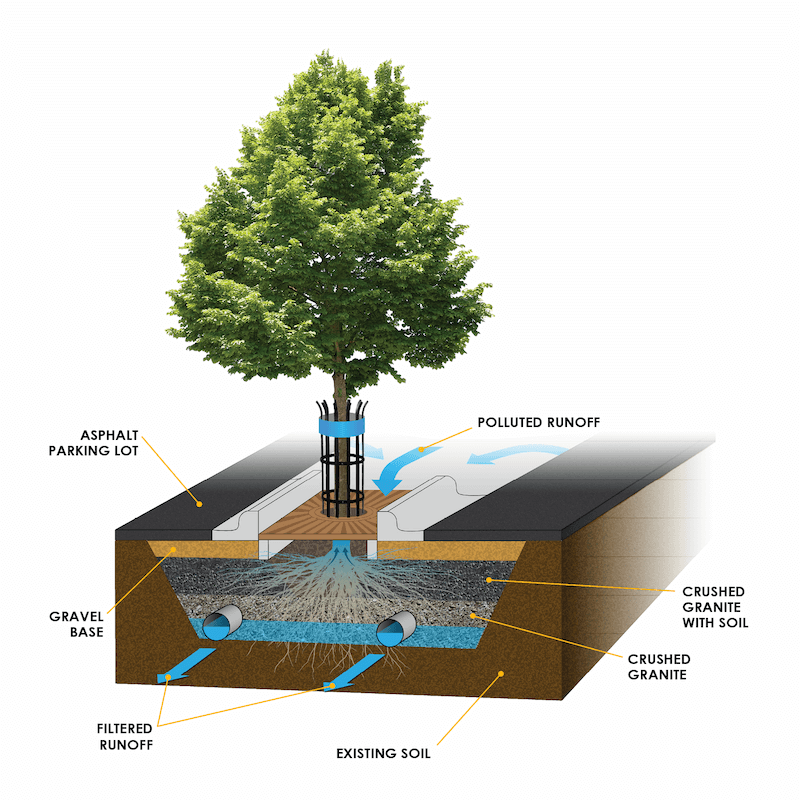 In addition to providing shade and habitat, trees can also help reduce runoff and filter pollutants.
In addition to providing shade and habitat, trees can also help reduce runoff and filter pollutants.
Creating win-win solutions with natural and built environments
There are many practical ways to retrofit your current property to incorporate green infrastructure and provide climate resilience. One approach is by developing a sustainable landscape master plan that accommodates your needs and wants while also reaping the benefits nature can provide.
At Barr, our landscape architects, ecologists, and civil engineers understand how to create win-win solutions with the natural and built environments. We focus on finding affordable answers to site and campus issues to create ecologically stable and climate-resilient landscapes that will benefit people for decades to come. Contact us to learn more about how to use green infrastructure to build climate resilience in your area.
About the author
Fred Rozumalski is a landscape architect and ecologist with more than three decades of experience in landscape architecture, ecology, horticulture, native-landscape design and restoration, and lake and wetland shoreline restoration. Working with a broad range of public and private clients, he strives to work with nature to create economically viable, low-maintenance landscapes that are beautiful and functional for people while also supporting plant and animal diversity and providing climate resilience.
Related projects
Maplewood Mall is an aging shopping facility in the Twin Cities metropolitan area with 35 acres of impervious parking and road surfaces. Working with the Ramsey-Washington Metro Watershed District, the City of Maplewood, Ramsey County, and mall owner Simon Property Group, Barr designed a stormwater management system that reduces polluted runoff, while meeting regulatory, technical, and aesthetic challenges.
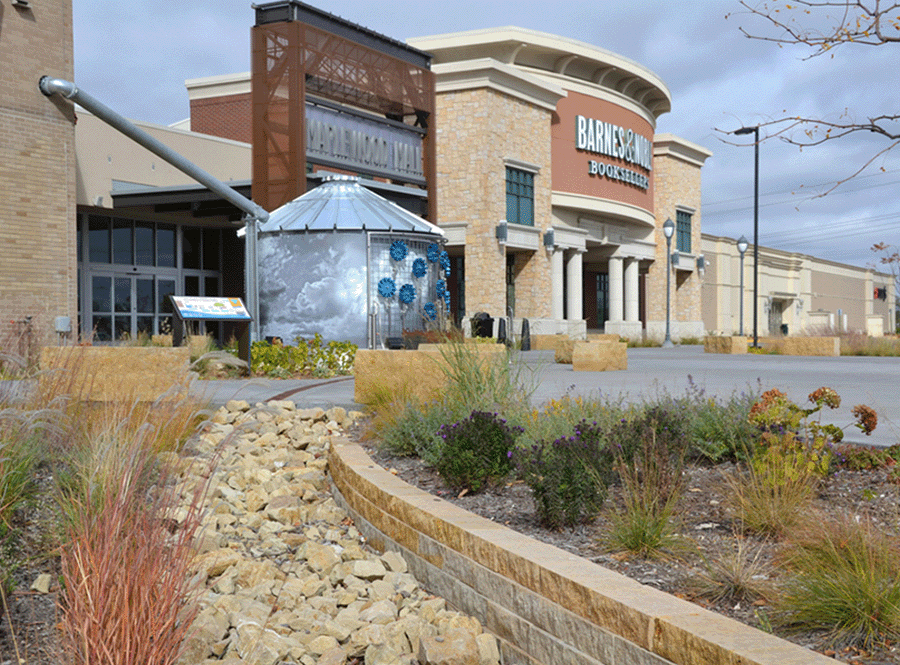
The Mississippi Watershed Management Organization built a new headquarters along the Mississippi River in northeast Minneapolis. Because the property had a long history of industrial and commercial uses, Barr worked with project architects and the client to apply best practices for brownfields remediation and ecological stormwater management to the site design. The building demonstrates that environmentally friendly stormwater management features can be successfully incorporated into brownfields redevelopments. Connected to surrounding trails and green spaces, the facility not only provides views and access to the Mississippi River but also serves as an outdoor classroom for school groups.
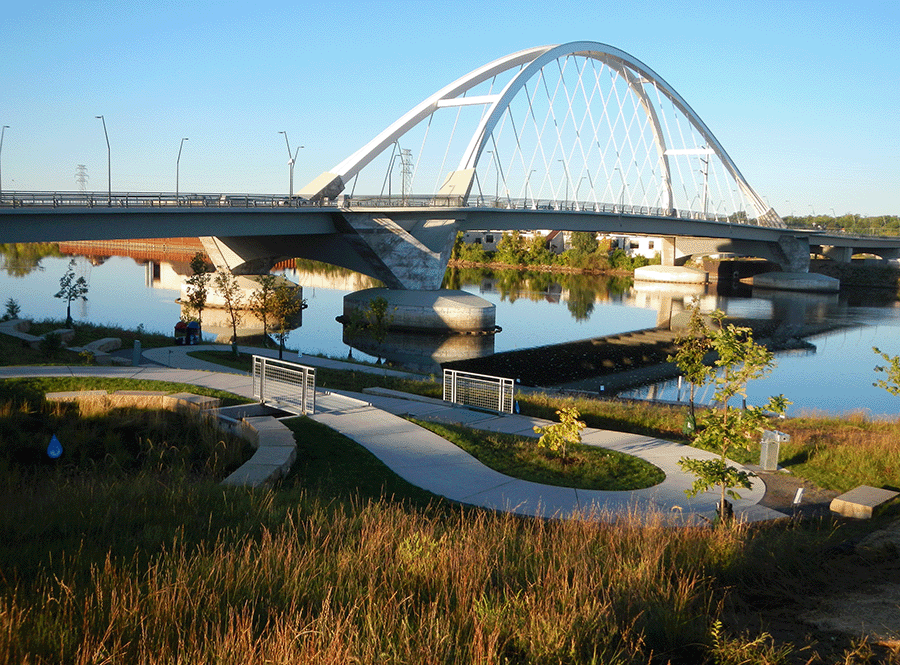
With acres of property, and many acres of maintained lawn, the Metropolitan Council sought an ecological approach to land management. Not only is lawn maintenance an environmentally unfriendly practice—consuming a lot of fuel, water, fertilizer, and pesticides—lawn maintenance is costly. With Barr’s guidance, the Metropolitan Council developed sustainable landscape guidelines to inform their land-use approach.
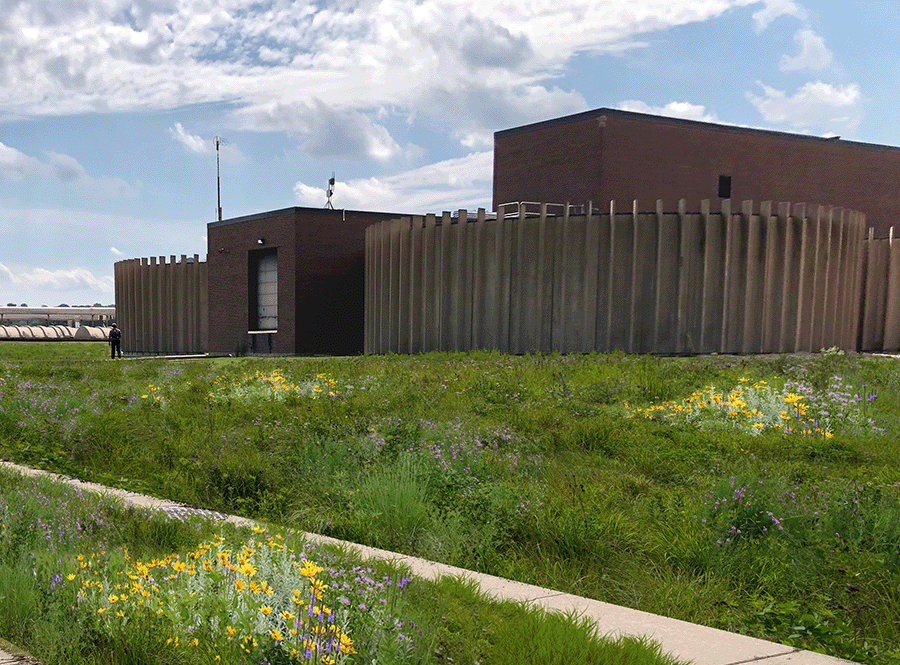
In response to failing, unattractive landscaping at many of its facilities, Hennepin County wanted to learn about the types of plants that would thrive at county sites—many of which receive minimal maintenance—and which plants to avoid. Barr facilitated a series of workshops for three county departments to understand the landscaping problems better and to discuss sustainable solutions. Using feedback from the meetings, we developed sustainable landscape guidelines for efficient, hardy, and attractive landscapes.
